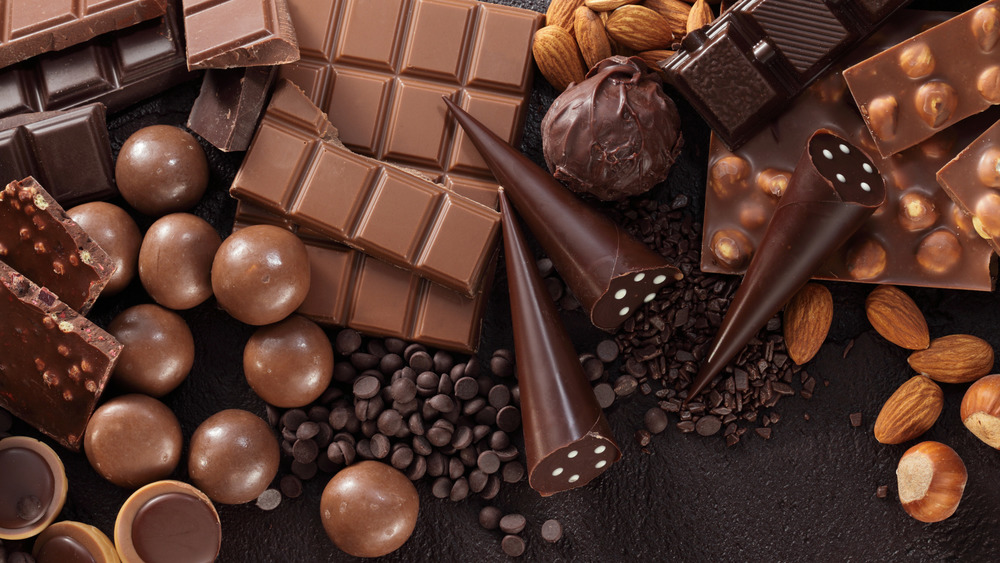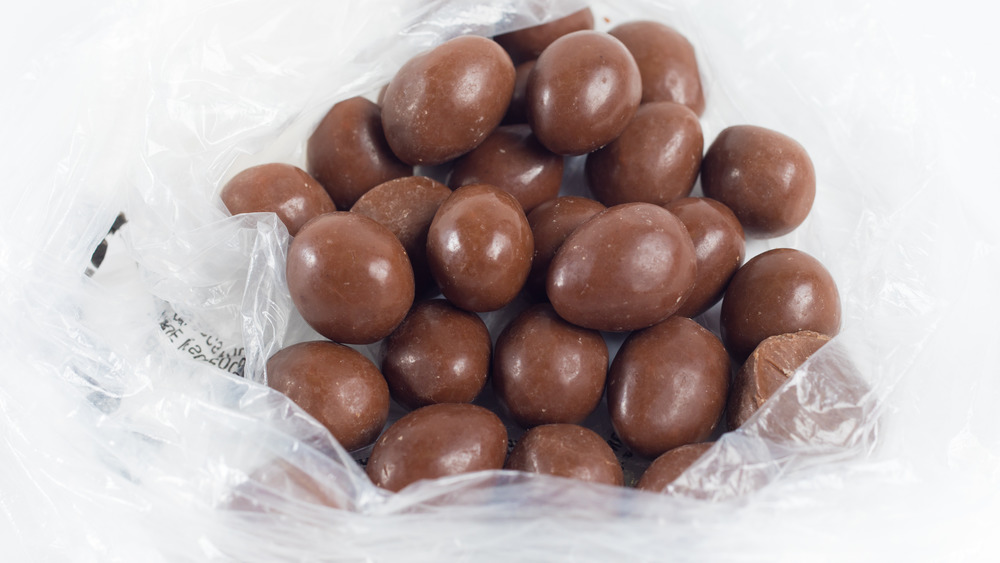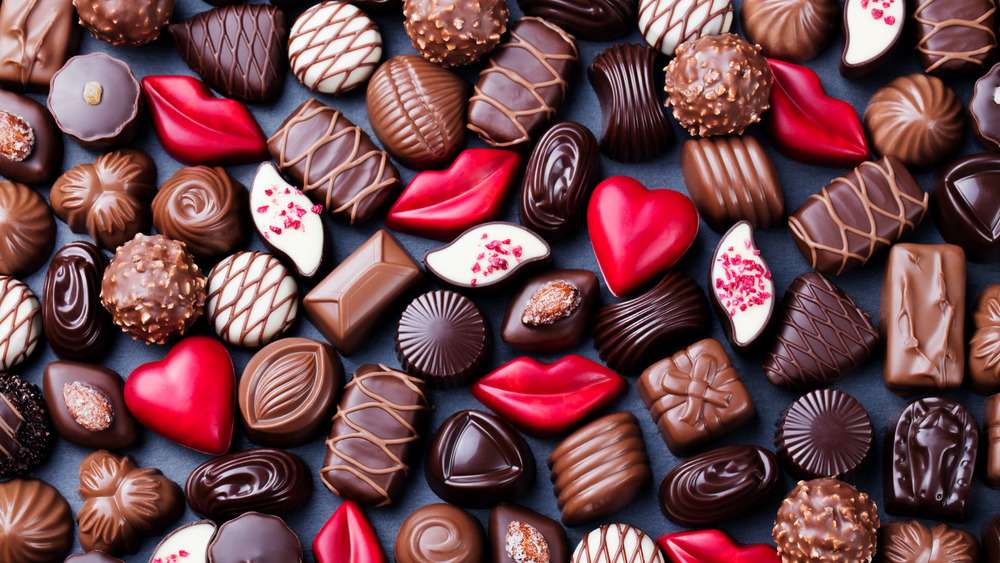Why Cheap Chocolate Isn't Actually Chocolate
To say we love our chocolate would be an understatement. The confection is so popular that British research firm IndexBox predicts the value of the U.S. chocolate market is expected to shoot past $20 billion by 2025 (via Candy Industry). Because fans believe chocolate is a mood booster, chocolate sales during the pandemic rose by 5.5 percent in the chocolate, and 12.5 percent in the premium chocolate categories respectively — and this was before the holiday season (via Confectionery Production).
Statista further says that in 2019, the Hershey chocolate company held the lion's share of the U.S. chocolate market with 44 percent of sales, followed by Mars with 30 percent. The best-selling brand in the US? M&Ms, which sold a whopping 688.7 million dollars.
Not all chocolate is created equal
But no matter which chocolate selection you choose, if the word "chocolate" appears on a packet of candy and it looks like chocolate, it doesn't necessarily mean that the candy that you're consuming is chocolate. The FDA is very strict about what it considers to be chocolate and what isn't. In order to "be" chocolate, a product should have at least ten percent chocolate liquor, which is a paste made with a combination of cocoa solids and cocoa butter (via Colby). The ingredient can also be listed separately as "cocoa" and "cocoa butter" (via Consumer Affairs). Under this requirement for instance, Hershey's Kisses would be considered chocolate because 11 percent is made with chocolate liquor (listed as "chocolate" and "cocoa butter"); the rest of the candy includes sugar, milk, and milk fat.
"Chocolatey" or "chocolate-flavored" doesn't mean chocolate
If you don't think ten percent is very much, you might want to consider the amount of chocolate you might (or might not) find in something that's marked "chocolatey" or "chocolate-flavored." Jennifer Abel at Consumer Affairs highlights one example, the Double Crisp bunny made by R.M. Palmer and sold at Dollar Tree stores which lists the following ingredients: sugar, partially hydrogenated vegetable oil (palm kernel, pal soybean and/or cottonseed), whey, crisp rice (rice, sugar, salt, malt), cocoa, lactose, skim milk, milk, soy lecithin (an emulsifier), vanillin (an artificial flavor), U.S. certified colors. Look, ma — hardly any chocolate!
There is nothing wrong with enjoying chocolatey-flavored goodness in your cereals, as a coating on your ice cream bars, or in your candy, but know that even under the FDA's ten percent-is-chocolate guideline (European candy manufacturers consider candy to be chocolate if it has 20 percent cacao, per Gourmet Boutique), these products couldn't pass a true chocolate test.


